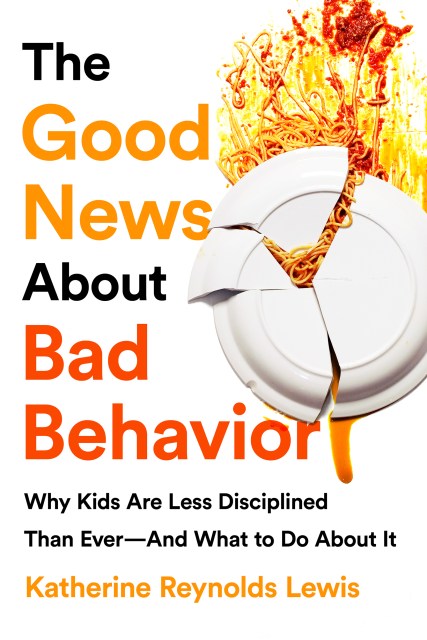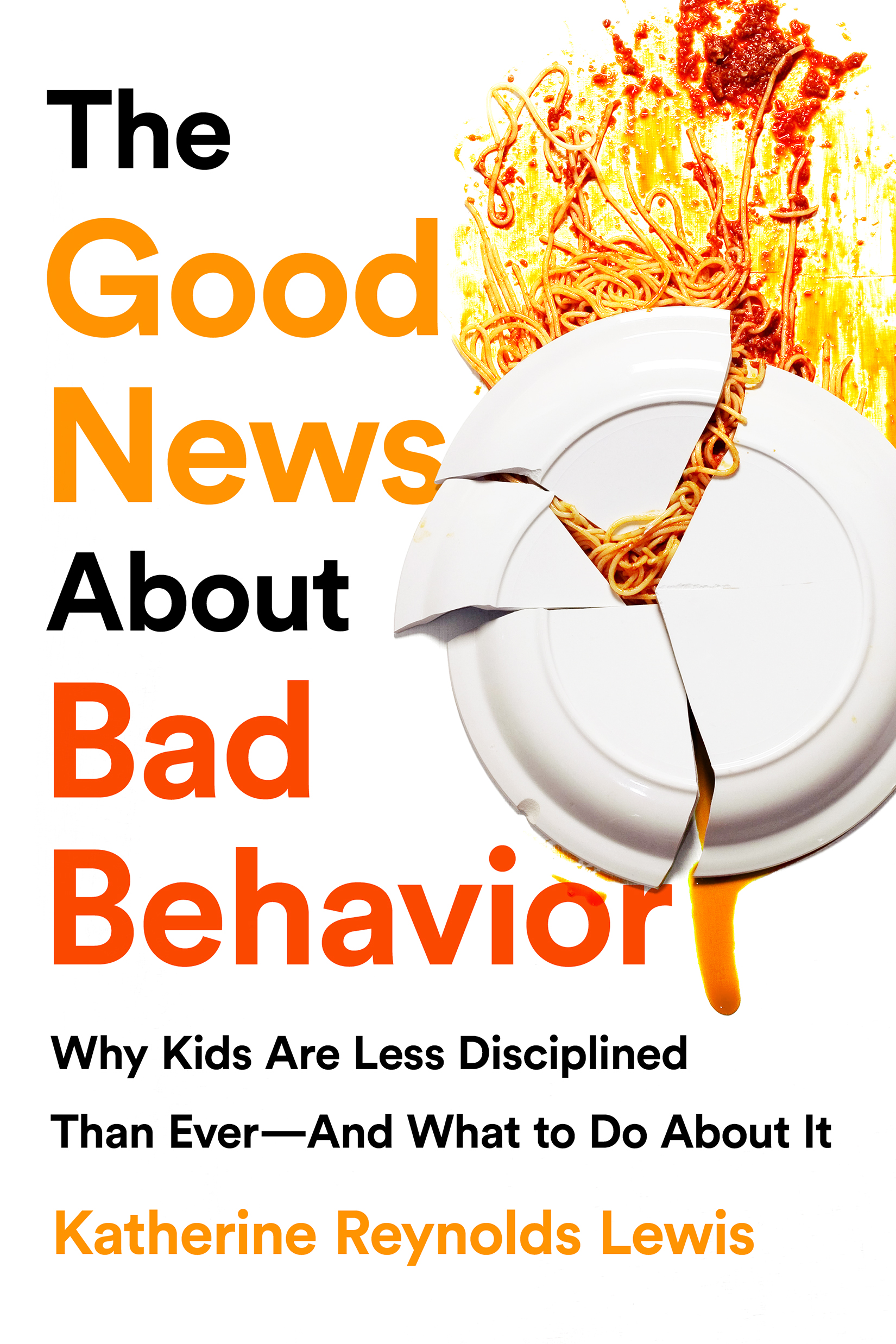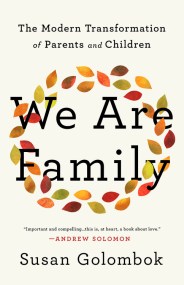Promotion
Use code BEST25 for 25% off storewide. Make sure to order by 11:59am, 12/12 for holiday delivery!
By clicking “Accept,” you agree to the use of cookies and similar technologies on your device as set forth in our Cookie Policy and our Privacy Policy. Please note that certain cookies are essential for this website to function properly and do not require user consent to be deployed.
The Good News About Bad Behavior
Why Kids Are Less Disciplined Than Ever -- And What to Do About It
Contributors
Formats and Prices
- On Sale
- Apr 17, 2018
- Page Count
- 288 pages
- Publisher
- PublicAffairs
- ISBN-13
- 9781610398398
Price
$11.99Price
$15.99 CADFormat
Format:
- ebook $11.99 $15.99 CAD
- Audiobook Download (Unabridged)
- Trade Paperback $16.99 $22.99 CAD
This item is a preorder. Your payment method will be charged immediately, and the product is expected to ship on or around April 17, 2018. This date is subject to change due to shipping delays beyond our control.
Buy from Other Retailers:
Why don’t our kids do what we want them to do? Parents often take the blame for misbehavior, but this obscures a broader trend: in our modern, highly connected age, children have less self-control than ever. About half of the current generation of children will develop a mood or behavioral disorder or a substance addiction by age eighteen. Contemporary kids need to learn independence and responsibility, yet our old ideas of punishments and rewards are preventing this from happening.
To stem this growing crisis of self-regulation, journalist and parenting expert Katherine Reynolds Lewis articulates what she calls The Apprenticeship Model, a new theory of discipline that centers on learning the art of self-control. Blending new scientific research and powerful individual stories of change, Lewis shows that, if we trust our children to face consequences, they will learn to adapt and moderate their own behavior. She watches as chaotic homes become peaceful, bewildered teachers see progress, and her own family grows and evolves in light of these new ideas. You’ll recognize your own family in Lewis’s sensitive, realistic stories, and you’ll find a path to making everyone in your home more capable, kinder, and happier — including yourself.
-
"Katherine Lewis has written a smart, compassionate book for the 21st century parent. Forget the carrot-and-stick approach to redirecting children's' behavior. We can help our kids develop their inner motivation for behaving well - while simultaneously forging lasting family bonds - by following the wise guidance in Bad Behavior."Daniel H. Pink, New York Times bestselling author of When and Drive
-
"Childhood - and parenting - have radically changed in the past few decades, to the point where far more children today struggle to manage their behavior. That's the argument Katherine Reynolds Lewis makes in her new parenting book, The Good News About Bad Behavior."NPR
-
"An engaging, conversational writer, Lewis intersperses the neurological deep-dive with fly-on-the-wall reporting on families in action and examples from her parent-training group... Lewis provides a reassuring road map forward. And a little more help with the laundry won't hurt, either."Seattle Times
-
"An approach to child-rearing that allows for 'the messiness of childhood.' As children today navigate tech and social media, a changing landscape of play, and a culture more oriented to personal success than family well-being, Lewis argues that we can no longer rely on old methods of discipline such as time outs."KQED
-
"Lewis proposes ... that, instead of simply levying a punishment in the moment, parents come up with agreements with their kids and clearly define the consequences for violating them."Washingtonian
-
"Household jobs can build a child's capability, helping them practice independence and autonomy, foster connection with the family and help them become capable adults, according to "The Good News About Bad Behavior," an insightful new book."San Francisco Chronicle
-
"Lewis wrote her book in response to what she sees as a crisis of self-regulation among kids today. This, she explains, is the reason why nearly half of today's children will develop a mood disorder, behavioral disorder or substance abuse problem by age 18."CNN
-
"At a time when families are feeling pressed for time and stressed by the demands of modern living, Katherine Reynolds Lewis makes an urgent case for connection, communication and giving children space to develop their own capability. With compelling stories and research, Lewis's book is a welcome guide through the land mines of modern parenting."Brigid Schulte, award-winning journalist, director of TheBetter Life Lab at New America, and author of the New York Times bestsellerOverwhelmed
-
"Katherine Reynolds Lewis, armed with the latest behavioral science research and her eye-opening journalistic inquiry, introduces a new discipline model.... An absolute must-read for anyone raising or teaching 'difficult' children, and insightful to anyone eager to teach kids how to regulate their own behavior and ultimately thrive in society on their own."Julie Lythcott-Haims, New York Times bestselling authorof How to Raise an Adult and Real American
-
"The Good News About Bad Behavior is the book parents and teachers need in order to understand the link between empathy and genuine, human connection to positive behavioral outcomes. Lewis explains how children's lack of self-regulation and resilience is at the root of so many modern parenting dilemmas and gives practical, useful advice for how to do better for our kids. The Good News About Bad Behavior is an important addition to my parenting and education library."Jessica Lahey, author of The Gift of Failure
-
"If you hate disciplining your kids with time-outs and punishments, you're in for a treat. Instead of trying to control children, this timely book shows how you can teach them to control themselves."Adam Grant, New York Times bestselling author of Giveand Take, Originals, and Option B with Sheryl Sandberg
-
"With a parent's compassion and a journalist's rigor, she offers advice from the trenches while providing a realistic roadmap towards a better family life. Blending solid science and highly readable storytelling, The Good News About Bad Behavior is sure to become a parent must-read."Judith Warner, New York Times-bestselling author of Perfect Madness: Motherhood in the Age of Anxiety and We've Got Issues: Children and Parents in the Age of Medication
-
"A book that is both incredibly fascinating AND insanely helpful? That's what you're holding in your hands. A great book! It is both reassuring and fantastic to know that there's a way out of bad behavior, and a very rational reason for why it exists in the first place!"Lenore Skenazy, president of Let Grow and author of Free-Range Kids
-
"Journalist and parenting coach Lewis documents a crisis seen in children of all ages. . . . plenty of practical advice . . . The Good News About Bad Behavior is a great addition to public and academic library parenting collections."Joyce McIntosh, Booklist
Newsletter Signup
By clicking ‘Sign Up,’ I acknowledge that I have read and agree to Hachette Book Group’s Privacy Policy and Terms of Use







